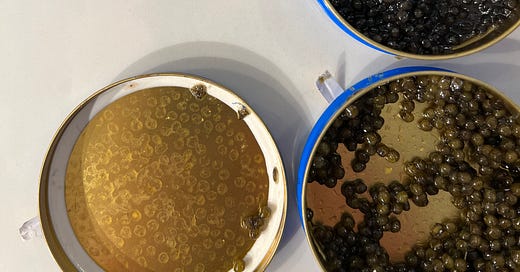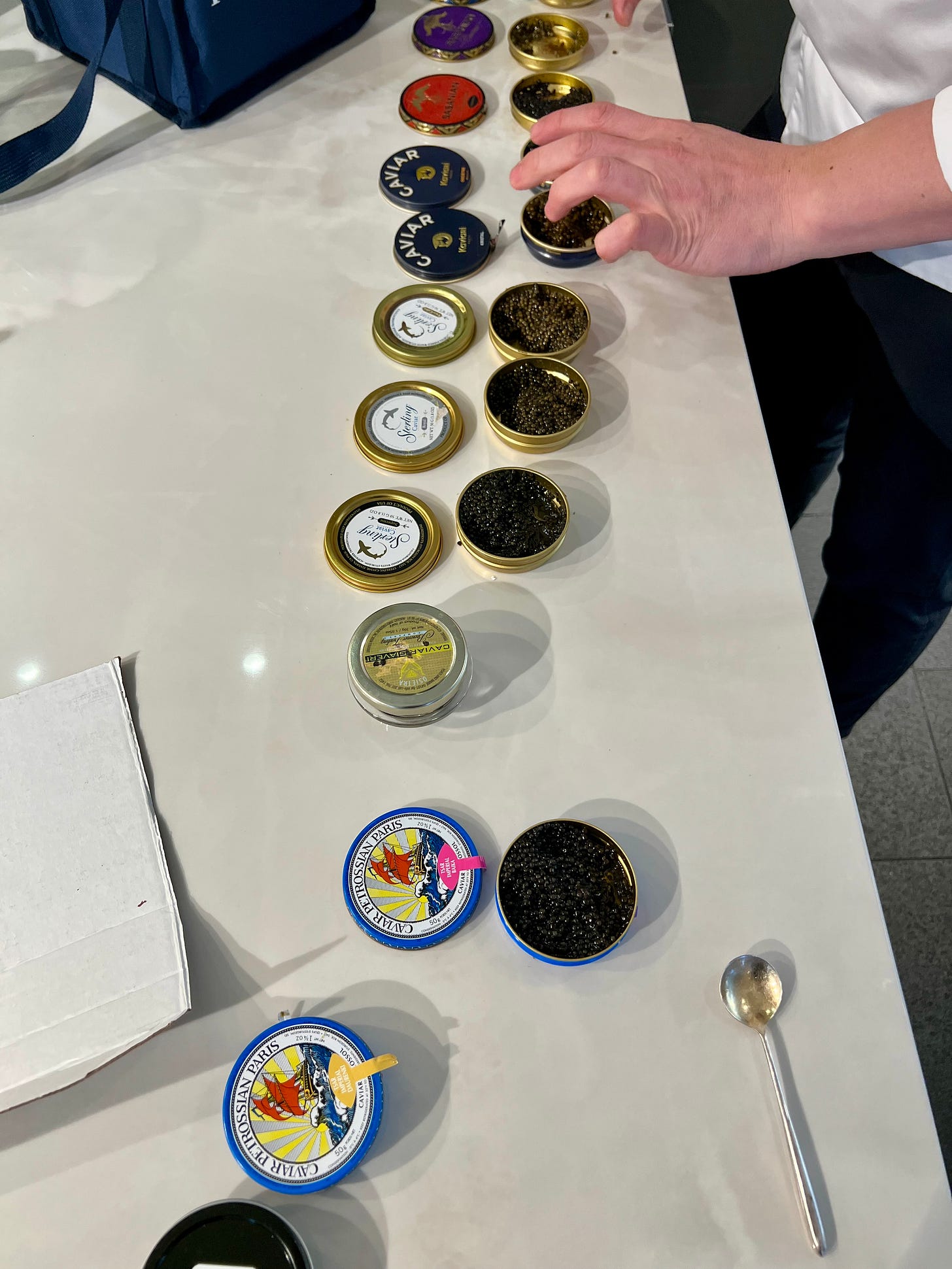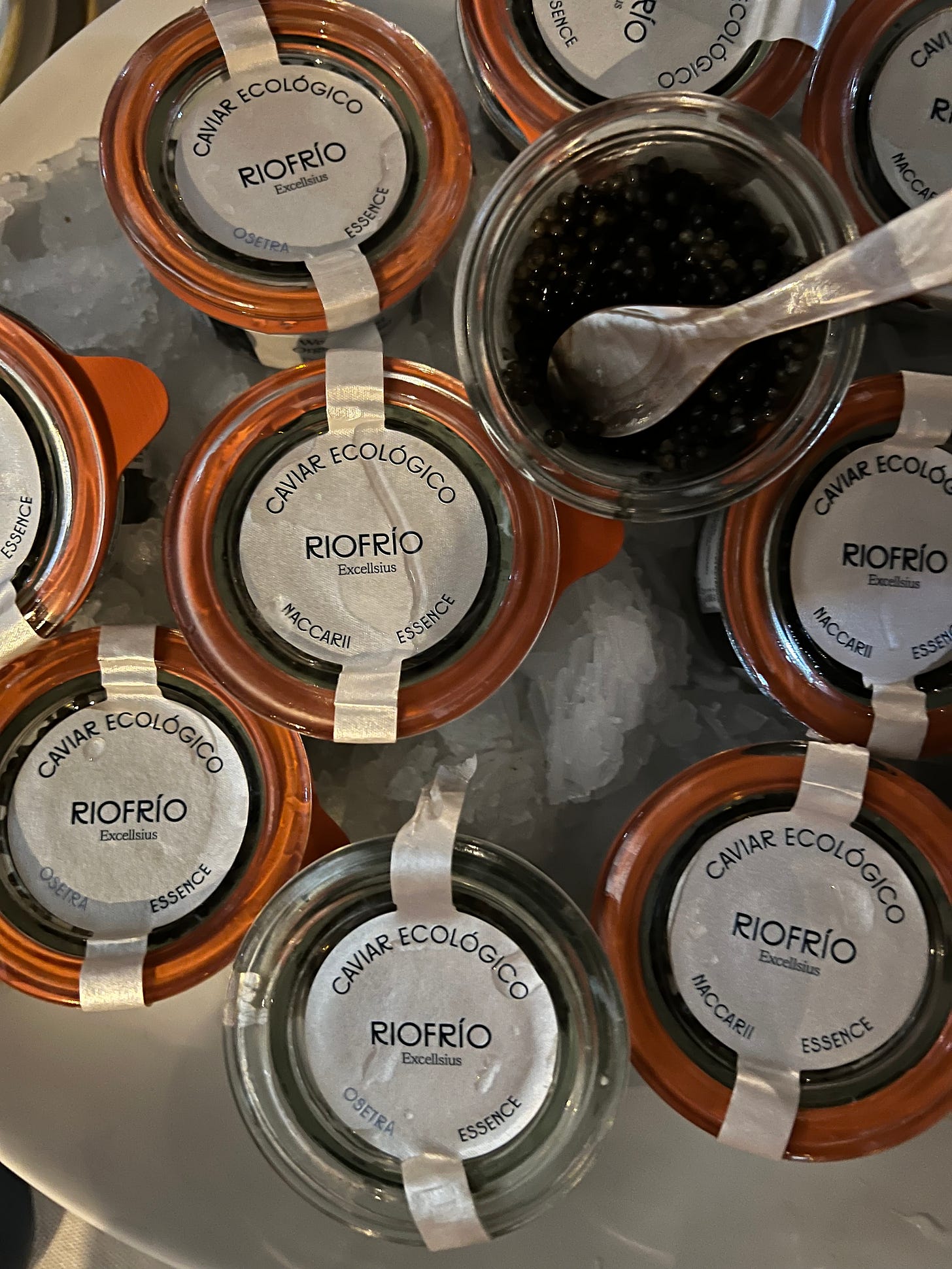Friends! I just returned from a trip to Spain, which always inspires me so much…I love reconnecting with my home country, seeing friends and family, and eating as many delicious things as I can find. I will be sharing more in the coming weeks about my trip and the things I did and of course ate, and today I am inspired to talk about one of my favorite ingredients that I ate a lot of while I was there…caviar. Are you ready for a history lesson? A delicious one? Let’s go!
Before I get into the specific history of caviar itself, I just want to speak for a moment about what it is, because many times the word “caviar” is used to refer to things that aren’t caviar. Caviar is specifically fish roe…fish eggs…from a sturgeon. There are many different varieties, but they should all come from a sturgeon, which I will discuss later in this post. There are lots of other delicious fish roes out there to enjoy, but if they are not from a sturgeon, they are not technically caviar.
History of Caviar
The first historic records of caviar are from Persia, although the ancient Greeks also enjoyed it. The word “caviar” itself comes from the Farsi word khâvyâr, which translates to “egg bearing.” Some of the best caviar in the world still comes from sturgeon in the Caspian Sea, which touches both Iran and Russia so those countries have enjoyed caviar for hundreds of years.
While the Persians were one of the first civilizations to keep records about caviar, the Russians made it more of a luxury item, and it was served in huge amounts in the courts of Russian Tsars—especially in the 19th century. It got more and more popular in all of Europe, and chefs everywhere began experimenting with it and putting it on their menus.
In the U.S in the mid-19th century there was also a boom in caviar consumption, because sturgeon were available in many places, especially the Mississippi River and the Great Lakes. So it was considered a luxury item in Europe, but can you believe that it was first served in saloons in the U.S? Maybe it was the first American tapa that fed a hungry and thirsty cowboy at the end of a long day! I guess that’s the original definition of “cowboy caviar”?
Both in the US and Europe, everyone loved caviar…and ate too much of it! So of course, as it happens, the less of it there is, the more expensive it becomes. Caviar in the U.S. eventually became less of a saloon snack and more of a delicacy demanded by some of the richest families in the late 1800s. So now Russian royalty loved it, American tycoons loved it…so it became well-known as a luxury item…and we all know that it’s considered a luxury today as well! But lots of caviar in today’s market isn’t expensive because it’s rare, it’s expensive because producing it is a careful process that requires a lot of labor and attention to detail, which I will talk about next.
Caviar Production
As I told you before, the term “caviar” refers specifically to sturgeon roe, and the sturgeon from the Caspian Sea and Black Sea historically have been Beluga, osetra and sevruga. Global overfishing has resulted in fewer wild sturgeon—the Caspian sturgeon population has declined by about 90%—and geopolitical conflict has limited trade from countries that still produce wild caviar. As a result, caviar producers have gotten more creative and also more sustainable. Most of the caviar you find today, especially in the U.S., is farmed. Which does not mean that the caviar is not high quality…it very much is! In Spain, producers like Riofrío (one of my favorites…the one I was enjoying on my most recent trip!) raise sturgeon in large, clear pools full of water from the mountains, and those fish are free-swimming and happy. Happy fish will have better appetites, and eventually produce more delicious caviar as a result.
Speaking of happy fish, I wanted to point out that there is a little bit of debate around pasteurizing caviar. Caviar harvesting is a delicate process, and if it isn’t done right, it will affect the quality and flavor of the eggs. The traditional method of caviar harvesting involves killing the fish—which would also kill any bacteria growing in the eggs, so we can eat the caviar unpasteurized. But there is another way to harvest the eggs while the fish is alive—the caviar is then pasteurized to make sure there are no bacteria present, as well as increasing its shelf life. The pasteurized caviar might have a slightly saltier flavor than the unpasteurized, but like many things when it comes to food, all that really matters is what you prefer.
And for the production of this beautiful treat, here is a fun word…malossol! It’s a Russian word that translates to “little salt,” and it refers to the curing process in caviar production…between 3% and 5% is the goal. Caviar on its own has a very subtle flavor, so the addition of a little salt preserves the roe and enhances its natural qualities.
I have so much more to say about caviar…of course it is one of my favorite foods, and one of my favorite topics to talk about! On Friday, for our annual and monthly subscribers, I will share with you a little more about the different types of caviar, what to look for when you’re shopping for it, and the many ways to enjoy it. Have a great week everyone, and see you on Wednesday for a great recipe for the season!







Nice article of the caviar history to promote Riofrío, then is this one pasteurized? Good work en los poblados del Sud, aun hay organización que reparte garbanzos y lentejas estofadas, y mucha pérdida de esta comida ya que la gente está aburrida del mismo potaje. Espero que haya control del desperdicio de comida
The dish we had at Jaleo with caviar and a fried egg was delicious. I might need to get some to make it at home.